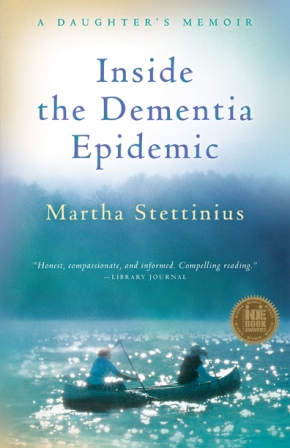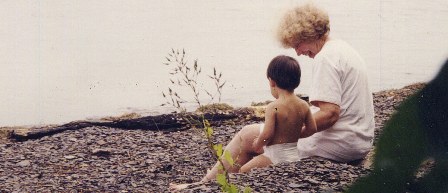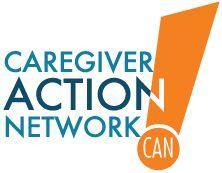 If you’re a family caregiver looking for help in the home, or investigating assisted living or nursing home care, “person-centered” care can enrich your loved one’s life—and your own. The trick is knowing what true person-centered care looks like, and how to find it or create it yourself.
If you’re a family caregiver looking for help in the home, or investigating assisted living or nursing home care, “person-centered” care can enrich your loved one’s life—and your own. The trick is knowing what true person-centered care looks like, and how to find it or create it yourself.
When my husband and I invited my mother, Judy, to move in with us and our young children 8 years ago, I knew nothing about person-centered care. I saw my mother not as a person living with dementia—a whole person with some cognitive impairment—but as a diminished version of herself. Like many people, I believed the stereotypes about Alzheimer’s disease and other dementias, and no longer saw my mother as a person with a full range of human needs, emotions, likes and dislikes. I focused on her limitations, not her strengths...
Read more of this post on caregivers.com.
As a former caregiver for my mother, and the author of the book "Inside the Dementia Epidemic: A Daughter's Memoir," I am impressed with these policy recommendations (and I've read the whole paper). What I still find confusing is what services and supports, exactly, have waiting lists and need more funding. If a caregiver approaches their local office for the aging (on their own or through NY Connects), what kind of respite is usually available, what kind of transportation, etc.? Does it vary from county to county, or are there state-wide standards? I went to a dementia caregiver support group at my office for the aging for 8 years, and was told that respite, for example, was a mish mash of volunteer programs, all with waiting lists. I believe that what caregivers need is publicly-funded respite and transportation, not unpaid volunteers. I believe that this policy paper should have recommended a certain number of respite hours a week per family as a minimum standard. (One hour a week, for example, does little.) Also, I agree that caregivers need "community care navigators" to help them understand services and supports that are available, and to make decisions that are best for them and the person they are caring for, but I wonder if existing staff at offices for the aging can provide that level of guidance for all of the people who need it. What we need is a whole lot more "navigators" who have training similar to geriatric care managers but who don't charge $50-$100 an hour. Every time I had to make a decision for my mother, or help her transition from one facility to another or from the hospital to rehab, I wished I had such a "navigators"--that I could afford. Is it realistic to hope for an army of publicly-funded community care navigators large enough to meet the demand? Or is it simply a matter of educating family caregivers about the existence of NY Connects and offices for the aging? I wonder. - See more at: http://states.aarp.org/caregiver-crisis-in-ny-looming-demographic-shift-could-spell-disaster-for-states-elderly-advocates-call-for-change/?intcmp=DSO-LOGIN#sthash.eYLPtBNW.dpuf
As a former caregiver for my mother, and the author of the book "Inside the Dementia Epidemic: A Daughter's Memoir," I am impressed with these policy recommendations (and I've read the whole paper). What I still find confusing is what services and supports, exactly, have waiting lists and need more funding. If a caregiver approaches their local office for the aging (on their own or through NY Connects), what kind of respite is usually available, what kind of transportation, etc.? Does it vary from county to county, or are there state-wide standards? I went to a dementia caregiver support group at my office for the aging for 8 years, and was told that respite, for example, was a mish mash of volunteer programs, all with waiting lists. I believe that what caregivers need is publicly-funded respite and transportation, not unpaid volunteers. I believe that this policy paper should have recommended a certain number of respite hours a week per family as a minimum standard. (One hour a week, for example, does little.) Also, I agree that caregivers need "community care navigators" to help them understand services and supports that are available, and to make decisions that are best for them and the person they are caring for, but I wonder if existing staff at offices for the aging can provide that level of guidance for all of the people who need it. What we need is a whole lot more "navigators" who have training similar to geriatric care managers but who don't charge $50-$100 an hour. Every time I had to make a decision for my mother, or help her transition from one facility to another or from the hospital to rehab, I wished I had such a "navigators"--that I could afford. Is it realistic to hope for an army of publicly-funded community care navigators large enough to meet the demand? Or is it simply a matter of educating family caregivers about the existence of NY Connects and offices for the aging? I wonder. - See more at: http://states.aarp.org/caregiver-crisis-in-ny-looming-demographic-shift-could-spell-disaster-for-states-elderly-advocates-call-for-change/?intcmp=DSO-LOGIN#sthash.eYLPtBNW.dpuf
 Friday, November 22, 2013 at 05:50PM
Friday, November 22, 2013 at 05:50PM  If you’re a family caregiver looking for help in the home, or investigating assisted living or nursing home care, “person-centered” care can enrich your loved one’s life—and your own. The trick is knowing what true person-centered care looks like, and how to find it or create it yourself.
If you’re a family caregiver looking for help in the home, or investigating assisted living or nursing home care, “person-centered” care can enrich your loved one’s life—and your own. The trick is knowing what true person-centered care looks like, and how to find it or create it yourself.

















Reader Comments